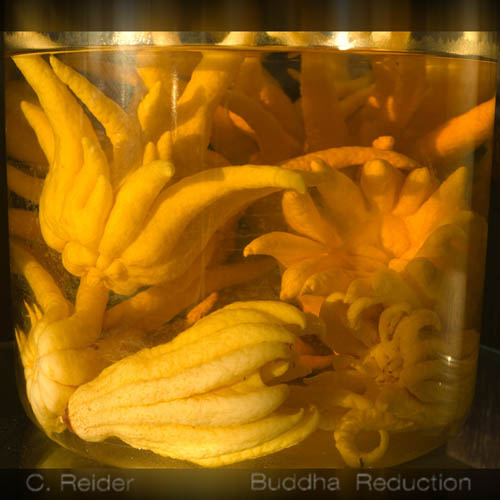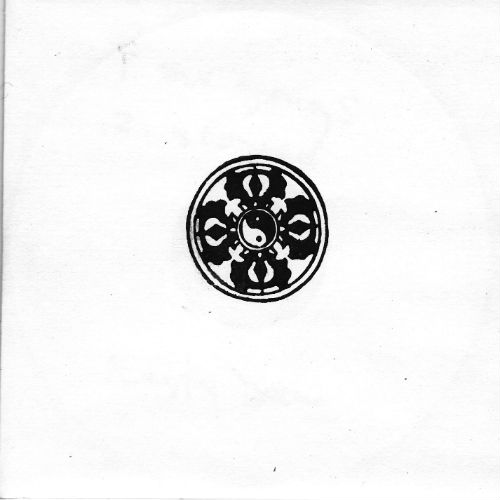“Reduction” is what I’ve been calling a certain process I use when processing sounds during composition. I’m probably not the only person to do this, I just don’t know of others. It involves a certain kind of noise reduction DSP. The audio editor is my main tool, where I do the vast bulk of work. The specific one I currently use, Amadeus Pro has a noise reduction function to it that can sample a selected sound. It’s usually used for, and was presumably designed to be used for, a hiss or rumble that runs through the entire track, but is isolated in one spot so it can be sampled. After sampling, the algorithm would scan the entire audio file for that sound, and attempt to remove all instances of it while leaving the rest of the audio mostly intact (but it does leave plenty of artifacts, when used as it was intended).
–
Not long after I first started to use this audio editor a number of years ago, I experimented with what might happen when you use the “desirable” signals instead of the “undesirable” noise as the sample that the noise reducer works on? What might happen if, for example, you sampled the entire audio file, and then removed that noise from itself?
–
The answer to that question is that, surprisingly, not all of the audio file is removed, there are some artifacts that are left over. For a piece called “Erased Silent Night (after Rauschenberg)” (sorry no sound clip), I had to subject the original recording of “Silent Night” by Simon and Garfunkel to about fifteen or twenty repeated noise reduction passes before I got the result approaching silent. Even so, it is still not completely silent. As Robert Rauschenberg‘s “Erased De Kooning” is not completely blank. (Rauschenberg’s Artsy page: https://artsy.net/artist/robert-rauschenberg).
–
A more satisfying use of this effect has been when I am working with a set of sounds instead of a single sound. One sound set I have used so far was the first twelve numbered “Constant” drones released on various netlabels and by various artists, the result of that work was my 2008 release “Inconstant“.
–
–
Another sound set I’ve used was a selection of five recordings of Thomas Park blowing on bottles, as the provided samples in one of Marc Weidenbaum‘s Disquiet Junto series of creative challenges for sonic practicioners.
–
–
The most recent set of sound sources that I selected as the subject for this process were the loops that were included on the FM3 Buddha Machine and Buddha Machine 2.
–
In each case there is a collection of sounds which have a numerical order, there were chronologically 12 Constant releases at the time I composed “Inconstant”, there were 5 numbered bottle sounds in the provided sound sources for the “Palindrone” Junto, there are nine loops in both the Buddha Machine and the Buddha Machine 2, featured chronologically one can presume that there is a 1st, 2nd, 3rd and so on.
–
The process I normally use in reduction with a numbered sound set is to begin with an audio file set as the target file, and then take the next audio file in sequence and use that as the first sound sampled and used to remove ‘noise’ from the primary target file. Then I’ll go on in sequence using the next sound file as the sample base for noise reduction, and the next, and so on… eventually using all the sounds in the set in order. What I’m left with in the end is a ‘reduced’ target sound that one might say is elementally different from all other sounds included in the set, given that all other sounds in the set were subtracted from it. Then I’ll move on, making the the next file in the sequence the target sound, and I’ll use the sound that follows it as the first basis for noise reduction, and I’ll continue moving around the sequence in order sampling and removing that noise, on and on and on until complete.
–
In the case of the most recent release “Buddha Reduction“, I first went through this process for all nine sound files, then I did it again in reverse order, leaving me 18 reduced files for both the first Buddha Machine and the Buddha Machine 2. Simple math tells me that there were 81 forward processing sessions, and 81 backward processing ones for each reduction, so in total for this release there were 324 processing sessions, not including processing for reverb and delay.
–
“Buddha Reduction 1” uses the sounds reduced from the Buddha Machine. The files processed in forward order were treated with reverb, to make the rather ‘denuded’ sounds more palatable to listen to. The files that were processed in reverse order were treated with a delay. The tempo of the delay was based on the perceived tempo of the original unprocessed sound file. Each file is introduced one by one into the mix according to its number in the set, and as each file is introduced, its tempo becomes the dominant one, affecting the delays of all other audible files in the mix at the time. “Buddha Reduction 2” follow exactly the same process, but uses the nine Buddha Machine 2 loops as its sound set.
–
–
This is, as you can imagine, a somewhat tedious process to work with. I actually think that tedium and process music ought to be bedfellows, so this is acceptable to me.
–
I hope this describes the process well enough. Feel free to ask for clarification if my description was too confusing. Knowing the way I write, I expect that it is likely!
–
–
ETA:
Here’s the most recent example: a straight reduction, with no further processing.
–
–
–
–
Posted by
C. Reider




